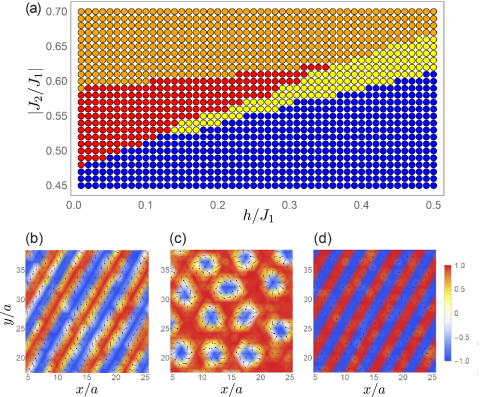The breaking of time-reversal symmetry by the introduction of magnetism in topological materials is key to unlocking unique topologically protected transport phenomena. MnBi2Te4 is suggested to be the first realization of an antiferromagnetic (AFM) topological insulator. Inelastic neutron scattering measurements on MnBi2Te4 reveal Ising-like magnetism with surprisingly strong interlayer exchange interactions and large lifetime broadening.
We find that the next-nearest neighbor AFM interaction (J2) competes with nearest-neighbor FM interaction (J1) within the triangular layer, placing the system close to the classical stability limit for intralayer ferromagnetic correlations, |J2/J1| < 1/3. In addition, we find that longer-range interactions up to at least the fourth neighbor are necessary to fully describe the intralayer spin dynamics.
These experimental observations are supported by first-principles (DFT + U) calculations of the magnetic interactions which are long-ranged and frustrated at correlation strengths of U ≈ 4–5 eV. Our classical Monte Carlo simulations show that the system is susceptible to forming long-period magnetic structures. This may allow, for example, the Bi-Te layers containing topological fermions to be subjected to a variety of helimagnetic or topological skyrmionic structures under suitable perturbations, such as chemical substitution or applied magnetic fields.
Bing Li, J.-Q. Yan, D. M. Pajerowski, Elijah Gordon, A.-M. Nedić, Y. Sizyuk, Liqin Ke, P. P. Orth, D. Vaknin, and R. J. McQueeney, “Competing Magnetic Interactions in the Antiferromagnetic Topological Insulator MnBi2Te4”, Phys. Rev. Lett. 124, 167204 (2020) DOI: 10.1103/PhysRevLett.124.167204.


